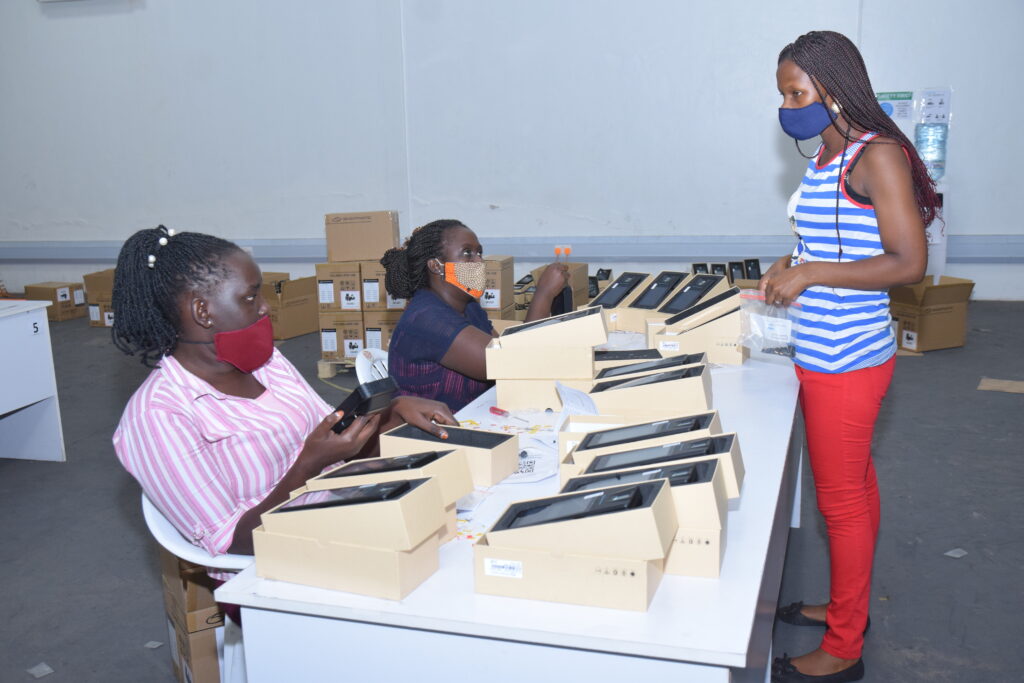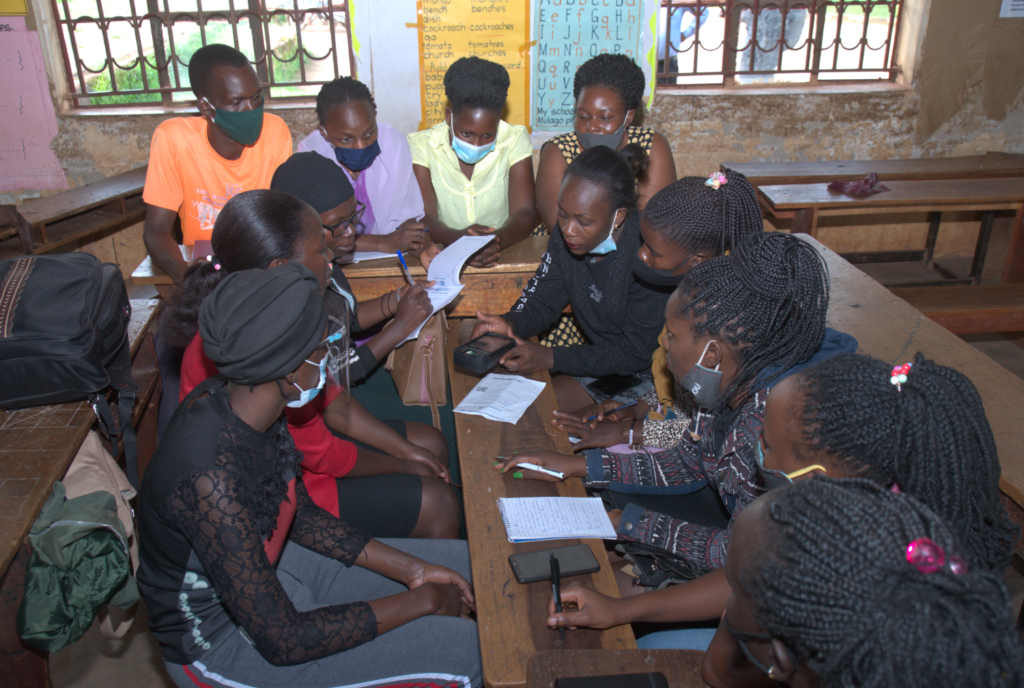By Gracia Hillman
Former commissioner on the U.S. Election Assistance Commission (EAC)
“Each time a woman stands up for herself, she stands up for all women.” – Maya Angelou
Women perform important yet often overlooked roles in how elections are carried out around the globe. Voters, candidates for elected office, and promoters of ballot initiatives and referenda depend on a universal standard of free and fair elections. Women proudly provide that assurance through their work on election boards and commissions. And evidence suggests that women are effective, trusted leaders. As in virtually all professions, however, women are still under-represented in the top echelon of election management bodies. Democracies would do well to continue righting this wrong.
“Each time a woman stands up for herself, she stands up for all women,” said American poet and civil rights activist Maya Angelou. These words of wisdom reflect the importance of including women in election staff. Gender representation in public institutions must be an immediate goal in contemporary democracies. Representation in election management bodies is not only morally right, it is an obligation. An election commission that is representative of the people in terms of ethnicity, race, ability and gender will help ensure that the interests of all groups are considered, making elections as inclusive as they are meant to be.
Evolution of the role
Today’s Chief Election Official (CEO) is a professional who serves as a high-ranking government official. It is appropriate that this executive position be referred to as a CEO. The job is also known by any of several titles, including commissioner, judge or clerk. As democracy across the globe continues to evolve, so too will the CEO’s work.
In most countries, legislative bodies determine how and when elections will be held. Companion to that is the role of the CEO, who is responsible for preparing, organizing, and conducting elections. The CEO’s job is demanding, complex, and has evolved over time from an occasional part-time clerical role to regular full-time professional work.
How elections were carried out began to change in the middle 1800s. In the US and other western democracies, these changes were driven by:
- The adoption of voter registration, which requires election officials to receive voter applications and maintain voter lists.
- The move away from ballots provided by parties to a ballot provided by local election officials, which requires additional preparation and resources.
- The adoption of mechanical voting machines, which require storage and maintenance.
This increasing complexity pushed the job to a level of importance that men coveted and assumed through privilege. At that same time, women were working for universal and equal suffrage, and their rights to hold positions of prominence in government, whether elected or appointed. Yet it took decades for women to begin to secure top management positions.
Embedded in the rise of women to prominence as CEOs is the historical nature of the work. Early on, when the job was mostly clerical and there were far fewer requirements, it was largely relegated to women. Consequently, there were a great many women working in the field who developed the knowledge, skills and ability to become a CEO. Other women transitioned into the elections business through the smart adaptation of relevant skills from other professions.

The State of Gender Equality in Numbers
Research conducted in March of 2022 by International IDEA on more than 200 EMBs worldwide revealed that, on average, only 22% of election management boards worldwide are chaired by women. The Americas, at 38%, have the most women chairs. Globally, there is little difference between governmental boards (24%) and independent boards (21%).
With women being 80% of local election officials (USEEOC)[1], the United States looks, at first glance, to be a success story. However, deeper analysis reveals lingering disparities. The conduct and adjudication of elections in the US has historically been assigned to sheriffs, judges and other similar roles traditionally dominated by men.

So, while women in the US hold the majority of election administration jobs, they hold fewer senior leadership-level jobs and far fewer prestigious and influential positions of CEO in large jurisdictions. For example, women represent about 85% of administrators in jurisdictions with fewer than 25,000 registered voters. That number drops to 47% in jurisdictions with more than 250,000 voters.[1] In fact, four of the five largest election jurisdictions in the US are led by men.
In the United States, the fact that the majority of women who work in EMBs are in non-leadership roles largely mirrors the overall status of women in politics and business. In 2020, only 5% of the S&P 500 companies were led by women. The World Economic Forum’s 2022 Global Gender Gap Report shows, across 156 countries studied, women represent only 22.9% of parliament seats and just 16.1% of ministers worldwide. Thus it becomes apparent that increasing the percentage of women as leaders, in politics and on election management bodies (EMBs), is still a work-in-progress in most of the world.
The Value of Female Leadership

Today’s CEO must perform as a top-notch executive. Political polarization, misinformation, cybersecurity threats and other challenges leave no room for ineffective management. Women are proving they are up to the executive task. They have demonstrated success and effectiveness. Time and again, findings show that women bring unique demographic skills to executive positions.
Research found that companies with a woman as the top executive perform better than those with a man as the top executive. In a study that examined gender and leadership styles, researchers found that, compared to men, women use a more transformational leadership style (inspiring, caring and encouraging). Meanwhile, men tend to adopt a manage by exception style (only intervene when problems become severe) along with the lassiez-faire leadership style (absent when needed). Further, surveys of both supervisors and subordinates showed that people believe women leaders are better at both communicating with others and showing consideration. While the research focused on executives in business, it carries true by reputation and result to the women who lead election bodies. With collaboration and determination, more opportunities will be available for women to do this important work.
The CEO Today
It took a great many decades for women to achieve status as CEOs. The admirable achievements of the women that are today leading election organizations are to be embraced and celebrated. This achievement bodes well for the future equality of women in the professional field of election administration. In addition to public service in their home jurisdictions, many women CEOs participate with United Nations programs and other international governmental bodies that work to preserve free and fair elections and promote non-partisan best practices.
More often than not, people do not know or even think about the CEO for the country, region, state or local government jurisdiction where they reside. Yet and still, perhaps without conscious thought, voters depend on the CEO to make certain that a free and fair election is protected and assured.
Women worked purposefully to achieve their status as CEOs, having to overcome the traditional obstacles of gender bias. Women have an innate quest for equality and equal participation with men, including the equal right to vote and hold decision-making positions in the government sectors. Brave are the women who were the “first” to take on the job of CEO in their jurisdiction. They suffered violations of their privacy and person, including sexual harassment, gender bullying and even physical violence. These same forms of violence have emerged in today’s world as cyberstalking and cyberbullying. Violations of privacy are all too easy with what is possible through the internet.
The United Nation’s Commission on the Status of Women affirmatively promotes that “all forms of violence and discrimination” prevent women from equal participation in all aspects of life and must not be tolerated. In March 2021, through its Agreed Conclusions, the Commission pledged its forward work for “recognizing the need to significantly accelerate the pace of progress toward ensuring women’s full, equal and meaningful participation and leadership at all levels of decision-making in…the public sector.”

Generally, the CEO is the highest-ranking elections executive and has the same levels of responsibility as top executives of any other government, business or nongovernmental enterprise. CEOs are the public face and voice of the electoral process in their jurisdiction. It is important for girls and boys to see this equality. This early exposure to women leaders motivates them, most especially girls, to become fully engaged citizens.
The extent of inclusion of women in election staff is a significant indicator of the level of participation of women in electoral and political processes, and ultimately in decision-making. Experts agree that active political engagement, from both women and men, strengthen countries’ democratic development.
The International Foundation for Electoral Systems (IFES), in its paper, Gender-Sensitive Indicators for Early Warning of Violence and Conflict, points out that “differential gender needs are often overlooked in analysis, planning and implementation of electoral activities. This negatively impacts women’s participation as voters, candidates and election administrators.”
EMB policies and programs can influence the degree to which women are able to participate in elections. And their consideration must extend to all EMB activities and decisions, as well in their interactions with other election stakeholders.
Globally, election bodies are preparing for next steps in the advancement of carrying out elections. Women CEOs are in the right job at the right time to work with legislative and international bodies to prepare the future. Voters need and want excellent election administration.
End Notes
2020 Democracy Fund/Reed College Survey of Local Election Officials
“Do Women Make Better CEOs Than Men.” Research by Dr. Farida Akhtar. Macquarie University Business School, Sydney, Australia. Article written by Mal Chenu and published in The Lighthouse. January 2020.
Eagly, A.H., Johannesen-Schmidt, M.C., & Engen, M.L. (2003). Transformational, transactional, and laissez-faire leadership styles: A meta-analysis comparing women and men. Psychological Bulletin, 129, 569-591.
Vecchio, R. P., & Anderson, R. J. (2009). Agreement in self–others’ ratings of leader effectiveness: The role of demographics and personality. International Journal of Selection and Assessment, 17, 165−179.